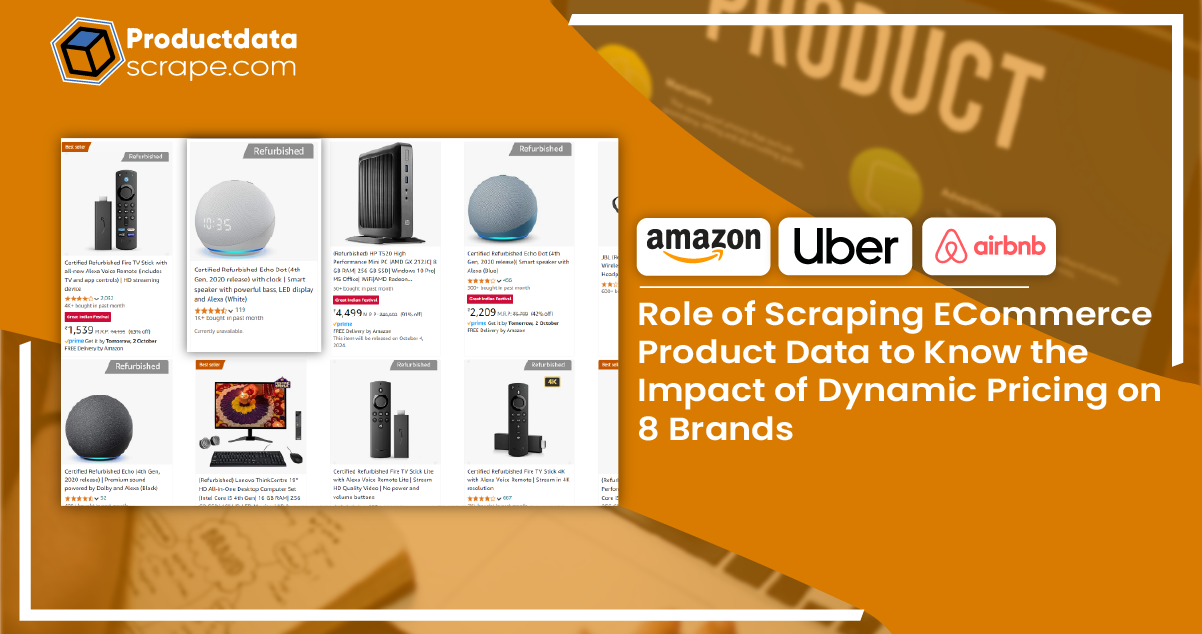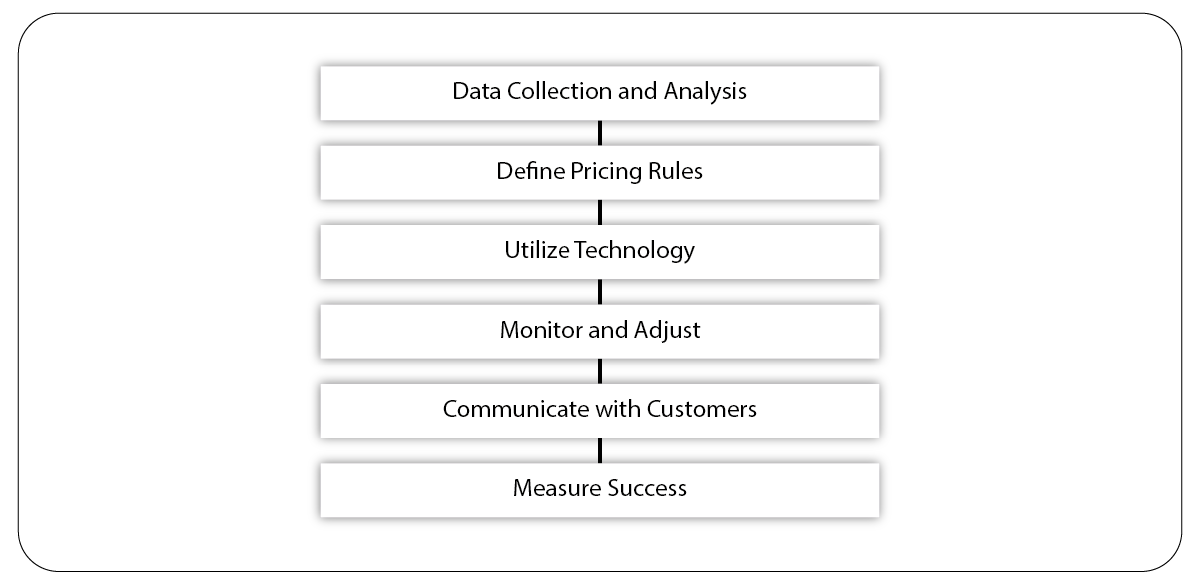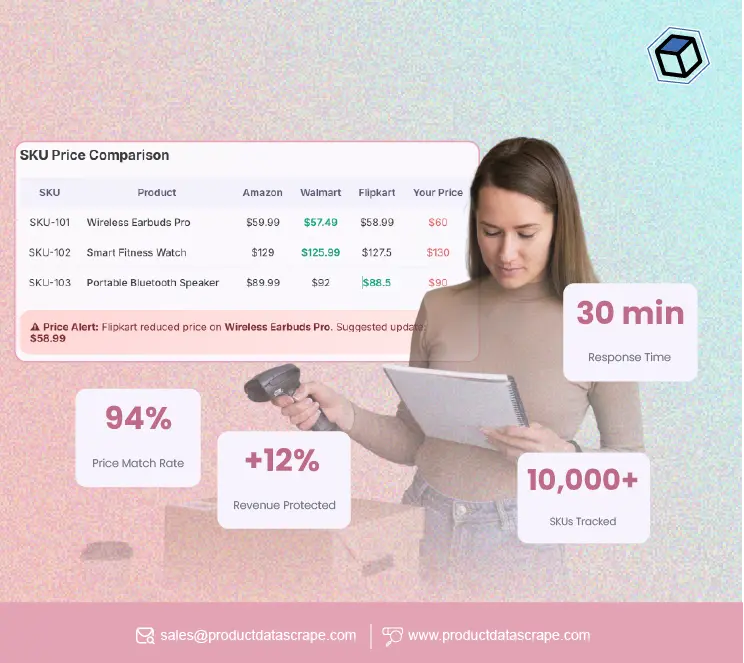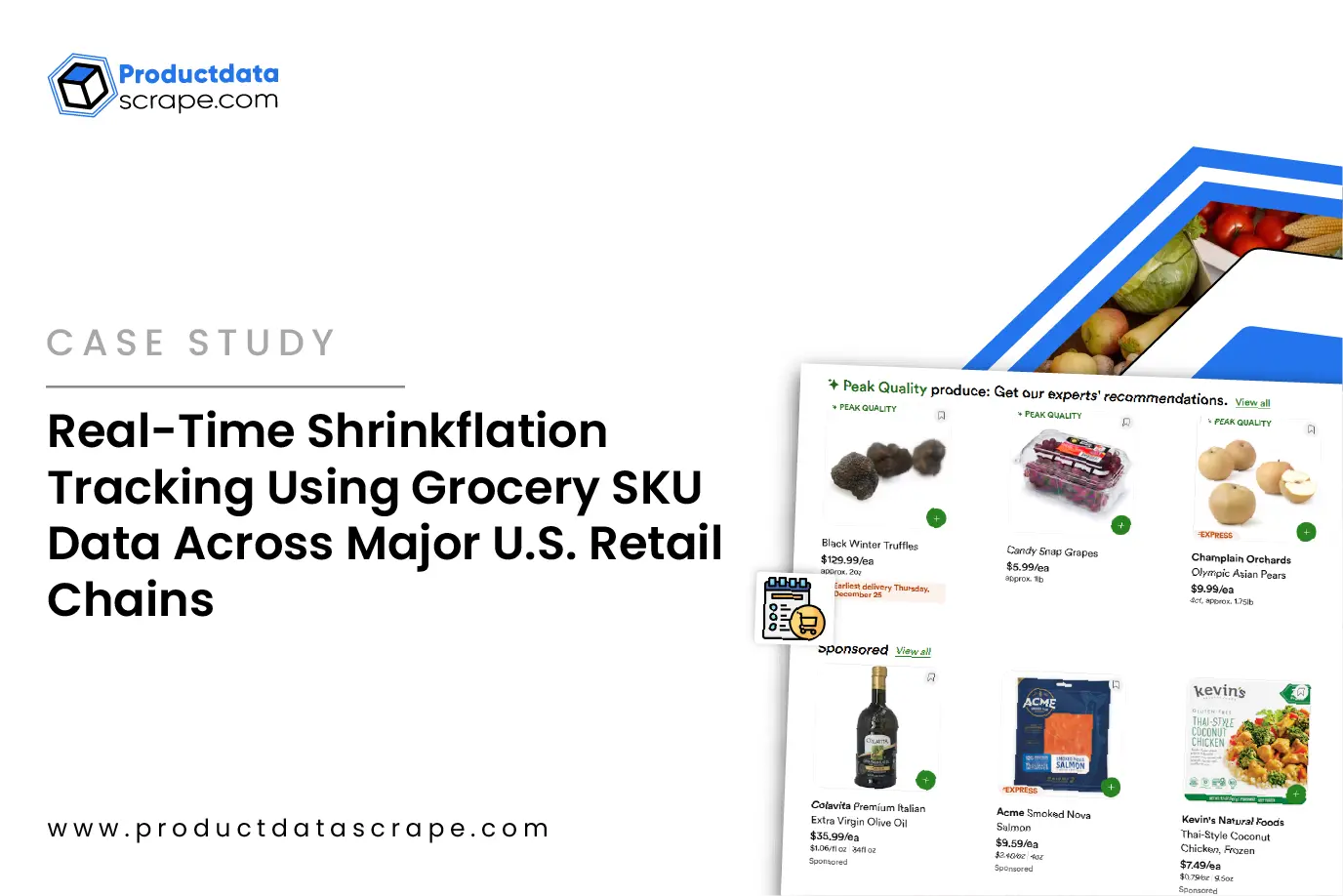
In today's fast-paced and highly competitive business landscape, pricing strategies have
become more crucial than ever. One such strategy that has gained immense traction is
dynamic pricing. This method allows businesses to adjust prices in real time based on
various factors such as demand, competition, and market conditions. Scraping eCommerce
Product Data shows how, by leveraging dynamic pricing, companies can maximize revenue,
optimize resource allocation, and enhance customer satisfaction. This article explores the
concept of dynamic pricing, its advantages, implementation strategies, and how eight
prominent brands have successfully utilized this approach to drive significant success.
What is Dynamic Pricing?
Dynamic pricing, often called demand or time-based, is a flexible pricing strategy where
prices are adjusted in real time in response to market demands. Unlike traditional pricing
models, which set fixed prices for products and services, dynamic pricing allows businesses
to fluctuate prices based on various factors, including:
- Demand fluctuations: Prices can rise during peak demand periods and falls down
during off-peak times.
- Competitor pricing: Companies can monitor competitors' prices and adjust
accordingly to maintain competitiveness.
- Customer segmentation: Different customer segments may be charged different
prices based on their willingness to pay.
- Market conditions: External factors like seasonality, economic shifts, and
unexpected events can influence pricing strategies.
Dynamic pricing has become increasingly prevalent in various industries, mainly e-
commerce, hospitality, and transportation.
Advantages of Dynamic Pricing

Implementing dynamic pricing offers several key advantages:
1. Maximized Revenue: Dynamic pricing allows businesses to capture maximum
revenue by adjusting prices based on real-time demand. During periods of high
demand, companies can increase prices to capitalize on customers' willingness to
pay more, while they can lower prices during slower periods to attract more buyers.
This approach aligns with effective Pricing Strategies that focus on optimizing
profits.
2. Improved Inventory Management: Dynamic pricing helps in managing inventory
more effectively. By adjusting prices in response to inventory levels, businesses can
incentivize sales when stock levels are high or maintain profitability by increasing
prices when inventory is low. This flexibility enhances the effectiveness of Price
Monitoring Services, ensuring timely adjustments.
3. Enhanced Competitive Edge: Companies can stay competitive in rapidly changing
markets by employing dynamic pricing strategies. Businesses can monitor
competitor pricing in real time and make necessary adjustments to ensure they
remain appealing to customers. This capability is vital for those who utilize E-
Commerce Data Collection Services to analyze market trends.
4. Increased Customer Insights: Dynamic pricing systems often rely on data analytics,which helps businesses gain valuable insights into customer behavior, preferences,
and buying patterns. This information can inform future marketing strategies and
product offerings. Companies can effectively Scrape eCommerce Product Data by
leveraging data for deeper insights.
5. Greater Flexibility: Dynamic pricing allows businesses to adapt to changing market
conditions, consumer behavior, and external factors. This adaptability can be a
significant advantage in volatile markets, allowing businesses to respond swiftly to
emerging trends.
6. Improved Customer Segmentation: Dynamic pricing allows businesses to effectively
cater to different customer segments. Companies can enhance customer satisfaction
and loyalty by tailoring prices based on customer demographics or purchase history.
This approach ensures that pricing aligns with customer needs, maximizing
engagement.
How to Implement Dynamic Pricing in Businesses

Implementing dynamic pricing effectively requires careful planning and execution. Here are
some steps to guide businesses in adopting this strategy:
1. Data Collection and Analysis
The first step in implementing dynamic pricing is to gather relevant data. Businesses should
collect information on customer behavior, historical trends, competitor pricing, and market
conditions. Analyzing this data helps identify patterns and informs pricing decisions.
2. Define Pricing Rules
Businesses should establish clear pricing rules based on the collected data. This may involve
setting thresholds for price adjustments based on demand levels, competitor pricing
changes, and inventory status.
3. Utilize Technology
Adopting dynamic pricing often requires leveraging technology. Implementing pricing
software or tools that can automate price adjustments based on predefined rules can
streamline the process and reduce the risk of human error.
4. Monitor and Adjust
Dynamic pricing is not a one-time effort. Companies must continuously monitor market
conditions, customer behavior, and competitor pricing to ensure their dynamic pricing
strategy remains effective. Regular adjustments and refinements may be necessary.
5. Communicate with Customers
Transparency is essential when implementing dynamic pricing. Businesses should
communicate with customers why prices may change and how they can benefit from
dynamic pricing strategies. This can help mitigate any potential dissatisfaction.
6. Measure Success
Finally, businesses should establish key performance indicators (KPIs) to measure the
effectiveness of their dynamic pricing strategy. Analyzing sales data, customer feedback,
and revenue metrics will help determine the implementation's success.
How These 8 Brands Drove Massive Success from Dynamic Pricing

Let's explore how eight prominent brands have effectively utilized dynamic pricing to
achieve remarkable success.
1. Amazon
Amazon is the most renowned example of dynamic pricing in action. The e-commerce giant
constantly adjusts prices based on various factors, including demand, competitor prices, and
inventory levels. By utilizing sophisticated algorithms and machine learning, Amazon can
automatically update prices multiple times daily.
Success Story: Amazon's dynamic pricing strategy has allowed the company to remain
competitive in the fast-paced e-commerce market. During peak shopping periods like Black
Friday and Cyber Monday, Amazon can increase prices for popular items, maximizing
revenue. Conversely, they can lower prices during slower sales periods to stimulate
demand.
2. Uber
Uber has revolutionized the transportation industry with its dynamic pricing model, often
called "surge pricing." During periods of high demand, such as rush hours or inclement
weather, Uber increases fares to incentivize more drivers to get on the road.
Success Story: Uber effectively manages supply and demand by implementing surge pricing.
For example, during a significant event or concert, Uber can adjust fares based on the
increased demand for rides, ensuring that riders can still find transportation while drivers
are motivated to work. This strategy has allowed Uber to increase and maintain its market
leadership.
3. Airbnb
Airbnb has successfully utilized dynamic pricing to optimize host rental rates. The platform
analyzes factors such as location, demand, seasonality, and local events to suggest optimal
pricing for property owners.
Success Story: Airbnb leverages dynamic pricing to enable hosts to maximize their rental income. For instance, hosts can increase their rates during significant events like
conventions or festivals to match the heightened demand while lowering prices during off-
peak times to attract more bookings.
4. Google
Google employs dynamic pricing through its Google Ads platform, where advertisers bid on
keywords. The cost-per-click (CPC) can fluctuate based on competition and demand for
specific keywords.
Success Story: By implementing dynamic pricing in its advertising model, Google ensures that advertisers pay varying amounts for their ad placements based on demand. This
flexibility allows businesses to allocate their advertising budgets more effectively,
maximizing their return on investment.
5. General Motors
General Motors (GM) has embraced dynamic pricing to optimize its vehicle pricing
strategies. The company analyzes market demand, competitor prices, and customer
preferences to adjust vehicle prices in real time.
Success Story: By leveraging dynamic pricing, GM can swiftly respond to changes in the automotive market. For instance, if a particular model experiences high demand, GM can
increase prices accordingly, maximizing revenue while remaining competitive.
6. Disney
Disney has implemented dynamic pricing for its theme park tickets and hotel reservations.
The company adjusts prices based on demand, seasonality, and visitor trends.
Success Story: By using dynamic pricing, Disney can optimize attendance during peak times
and effectively manage crowd levels. For example, ticket prices may be higher during the
holiday season, while off-peak days may offer discounted rates, encouraging visitors to
choose less crowded times.
7. Airlines
The airline industry has long utilized dynamic pricing to maximize revenue. Airlines adjust
ticket prices based on demand, time until departure, and competition.
Success Story: Airlines frequently change prices in response to booking trends. For example,prices may rise significantly as the departure date approaches and seats become scarcer.
This dynamic approach allows airlines to optimize their seat inventory and ensure
profitability.
8. Major League Baseball
Major League Baseball (MLB) has adopted dynamic pricing for ticket sales. Teams adjust
ticket prices based on demand, opponent strength, and day of the week.
Success Story: MLB teams can optimize ticket sales and maximize revenue by implementing dynamic pricing. For instance, ticket prices for high-demand games, such as rivalry
matchups, may be significantly higher than for less popular games. This strategy has helped
teams increase attendance and revenue from ticket sales.
Conclusion
Dynamic pricing has emerged as a powerful tool for businesses looking to maximize revenue
and optimize their pricing strategies. The success stories of brands like Amazon, Uber,
Airbnb, Google, General Motors, Disney, airlines, and Major League Baseball demonstrate
the effectiveness of this approach. These companies have gained a competitive edge in their
respective industries by leveraging real-time data, understanding market dynamics, and
implementing dynamic pricing strategies.
As the business landscape evolves, dynamic pricing will likely play an increasingly vital role in
helping companies navigate challenges and capitalize on opportunities. By embracing
dynamic pricing, businesses can drive significant success and enhance customer satisfaction
and loyalty, paving the way for long-term growth.
At Product Data Scrape, we strongly emphasize ethical practices across all our services, including
Competitor Price Monitoring and Mobile App Data Scraping. Our commitment to transparency and
integrity is at the heart of everything we do. With a global presence and a focus on personalized
solutions, we aim to exceed client expectations and drive success in data analytics. Our dedication to
ethical principles ensures that our operations are both responsible and effective.




 Implementing dynamic pricing offers several key advantages:
Implementing dynamic pricing offers several key advantages:
 Implementing dynamic pricing effectively requires careful planning and execution. Here are
some steps to guide businesses in adopting this strategy:
Implementing dynamic pricing effectively requires careful planning and execution. Here are
some steps to guide businesses in adopting this strategy:















.webp)
-01.webp)
.webp)

.webp)